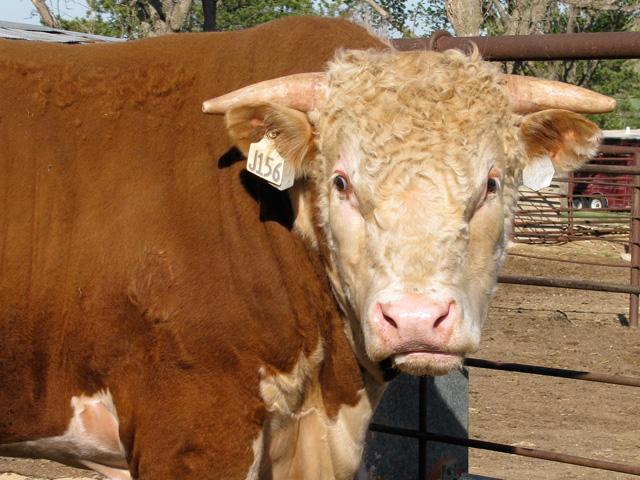Ask the Vet
Hoof Problems Could Affect Bull's Ability to Breed Dependably
READER QUESTION:
I am at my wit's end with my poor bull. I got him in December as a Christmas present from my husband. He is a beautiful 5-year-old Hereford, a former show animal. By January, he was lame in the back left leg, and it looked like a pus-filled abscess in the top of his hoof. We took him to two vets, and both gave him antibiotic shots and told us to get rid of him. We chose to keep and try to treat him. He continued to improve, we put him out with some cows, and he appeared to be able to breed them. But, about a month after turning him back out, he is lame in the other foot. What the heck could be causing this, and what can we do about it?
DR. MCMILLAN'S ANSWER:
When there is pus at the coronary band, it often indicates an infection from the heel or sole of the foot that has worked its way from the bottom of the hoof to top from the pressure of walking. This is often due to a puncture wound but can also result from laminitis or founder.
P[L1] D[0x0] M[300x250] OOP[F] ADUNIT[] T[]
Founder is an inflammation of the sensitive lamina of the hoof that holds the hoof to the coffin bone (P3). With founder, the P3 can come unattached from the hoof wall and rotate downward. This can damage the sole or create a break in the white line where the sole attaches to the hoof.
Any break in the integrity of the sole, whether from a puncture or from founder, allows bacteria from the soil to infect tissues under the sole. This infection can be very painful as it builds up pressure within the hoof walls. Additionally, the infection can get into joints and create "septic" arthritis. This type of infection can be very difficult to control and, even if it resolves, can lead to crippling arthritis.
There are many causes of laminitis, but in cattle, rumen acidosis has been commonly linked to the ailment. Acidosis causes certain bacteria to die and release endotoxins that can lead to inflammation in the hoof. High-concentrate diets and stress can take a toll on rumen pH and the delicate balance of microbes at work there.
So, while I cannot know for certain, I have to wonder if this bull may have had mild laminitis at some point. Show cattle are developed and maintained on high-energy diets, and they are hauled to shows around the country, generally living a very different life from most cattle. The fact that it happened in both feet makes a puncture wound less likely, and that is why I go back to his show career as a possible cause.
I understand this bull is important to you, and if you want to keep him, I'd recommend starting with a very thorough examination. A tilt table or chute is useful in a case like this, because it allows for a close assessment of the claws and sole. Radiographs can help determine if there is rotation of the P3 and, if so, how severe it is. There are treatment options that might help him, but because this involves the rear legs, I am concerned lameness could return during the breeding season even if he improves in the off months.
I wish I had better news, but I too am concerned about whether this bull can be a dependable breeder.
Editor's Note:
Please contact your veterinarian with questions about the health of your herd or other animals. Every operation is unique, and the information in this column does not pertain to all situations. This is not intended as medical advice but is purely for informational purposes.
Email Dr. Ken McMillan at vet@progressivefarmer.com.
(c) Copyright 2024 DTN, LLC. All rights reserved.






